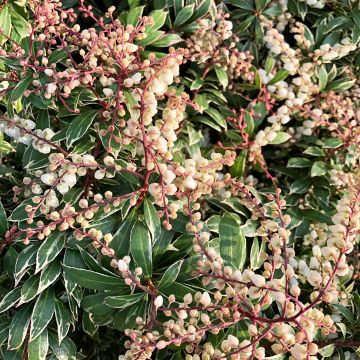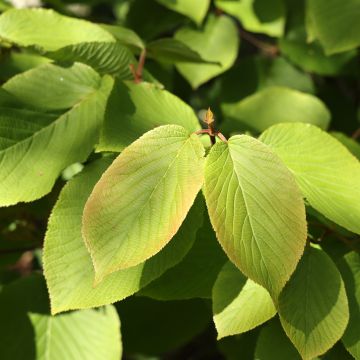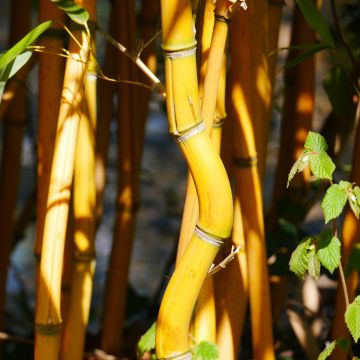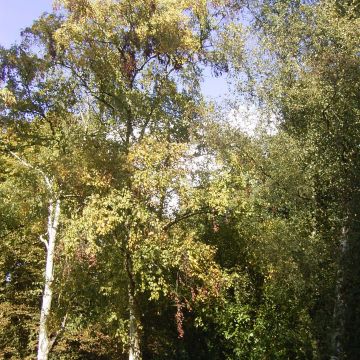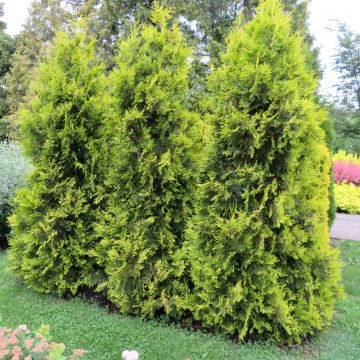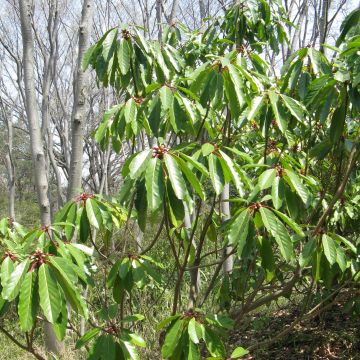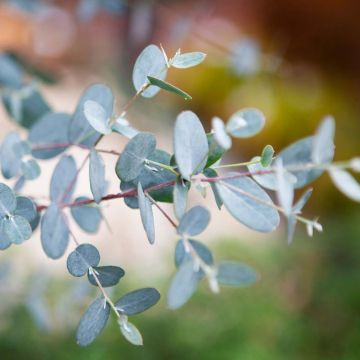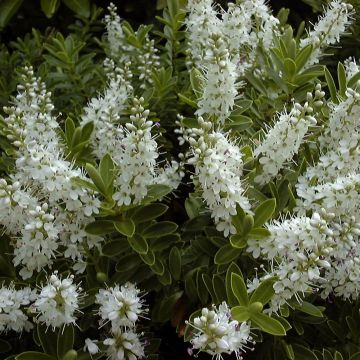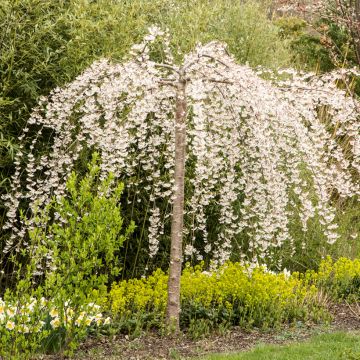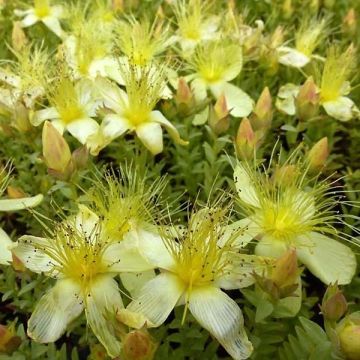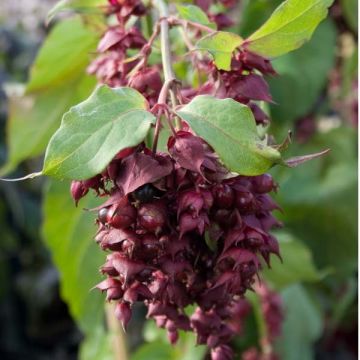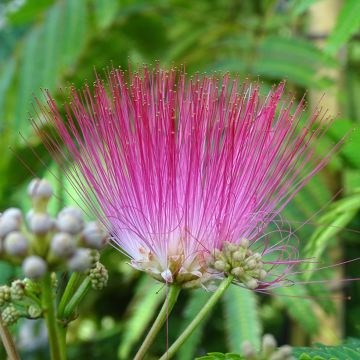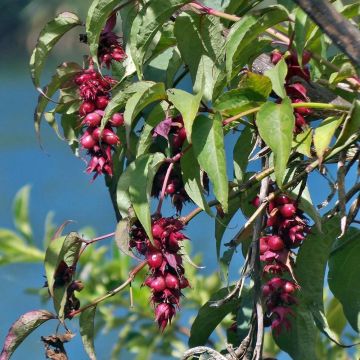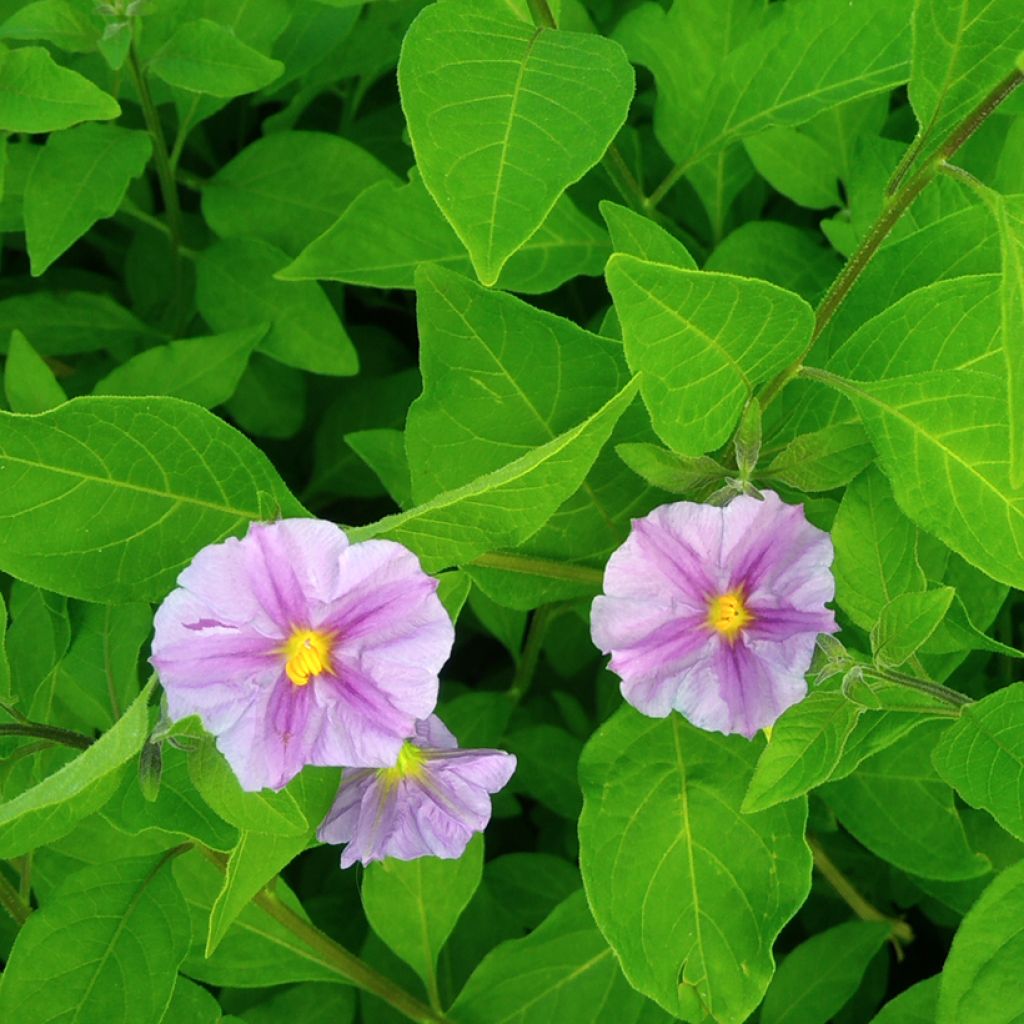

Solanum rantonnetii Charles Pink Star
Solanum rantonnetii Charles Pink Star
Solanum rantonnetii Charles Pink Star®
Blue Potato Bush, Paraguay Nightshade
This item cannot be shipped to the selected country
Delivery charge from €5.90
More information
Schedule delivery date,
and select date in basket
This plant carries a 24 months recovery warranty
More information
We guarantee the quality of our plants for a full growing cycle, and will replace at our expense any plant that fails to recover under normal climatic and planting conditions.
From €5.90 for pickup delivery and €6.90 for home delivery
Express home delivery from €8.90.
Does this plant fit my garden?
Set up your Plantfit profile →
Description
Solanum rantonetti Charles Pink Star is a variety of Solanum rantonetti that stands out for its two-tone pink flowering, an unusual colour for this plant. It is a bushy shrub that blooms continuously from spring until the first frost. Its beautiful flowers resemble those of a petunia, with a pale pink, slightly mauve colour striped with a deeper pink and a bright yellow centre. It is a generous plant that is easy to grow, except for its low cold resistance. Outside of the mildest winter regions, it can be grown in a large pot. It will flower on the terrace throughout the summer and can be brought indoors during the winter to protect it from the cold.
Solanum 'Charles Pink Star' is a Dutch horticultural selection by Charles Hendriks. The original species with mauve-blue flowers, recently renamed Lycianthes rantonnetii and nicknamed the tree gentian, is native to South America. It is a plant adapted to hot climates with mild winters. Like the original species, the variety 'Charles Pink Star' is a frost-sensitive shrub with a bushy and upright habit, with flexible branches. When mature, it forms a bush 1.50m to 2m tall and 1m to 1.50m wide. Flowering begins in May-June, depending on the climate, and continues until October, as long as there is no frost. The approximately 3-4cm in diameter flowers, are rounded with flared trumpet-shaped throats and have 5 petals in two shades of pink opening onto a bright yellow throat and stamens. The foliage of this shrub is more common, consisting of oval, medium-green leaves with wavy edges. It persists in winter if there is no frost, but will be deciduous otherwise. The crown of a well-established plant can withstand short frosts of around -5 to -6 °C. This fast-growing Tree Gentian likes warm and sunny exposures, as well as rich, moist, but well-drained soils.
Solanum rantonetti 'Charles Pink Star' is, like Lantanas, Cape Plumbago, and other Polygala, a suitable plant for coastal or very sheltered gardens. It is an excellent terrace or balcony plant that can be easily paired with white or pink Dipladenias, especially the climbing varieties 'Bella White' and 'Bella Pink Star'.
Report an error about the product description
Plant habit
Flowering
Foliage
Botanical data
Solanum
rantonnetii
Charles Pink Star®
Solanaceae
Blue Potato Bush, Paraguay Nightshade
Lycianthes rantonnetii
Cultivar or hybrid
Other Shrubs A to Z
Planting and care
You can plant your Solanum rantonnetti 'Charles Pink Star' in the ground or in a pot placed in a sunny location. If you plant them in the ground, wait until the strong frosts have passed (they tolerate not too severe frost, -5 to -6 °C at the peak for an adult subject). In the meantime, you can grow them on in a pot in a warm and bright place to accelerate their growth. Plant your Solanums in a sunny exposure. They need well-drained soil and appreciate an organic fertiliser input at planting, then regularly during growth. In the ground, they resist drought quite well, but flowering will decline in prolonged drought. In pots, solanums need to be watered often and benefit from a very frequent fertiliser input.
Planting period
Intended location
Care
This item has not been reviewed yet - be the first to leave a review about it.
Summer-flowering shrubs
Haven't found what you were looking for?
Hardiness is the lowest winter temperature a plant can endure without suffering serious damage or even dying. However, hardiness is affected by location (a sheltered area, such as a patio), protection (winter cover) and soil type (hardiness is improved by well-drained soil).

Photo Sharing Terms & Conditions
In order to encourage gardeners to interact and share their experiences, Promesse de fleurs offers various media enabling content to be uploaded onto its Site - in particular via the ‘Photo sharing’ module.
The User agrees to refrain from:
- Posting any content that is illegal, prejudicial, insulting, racist, inciteful to hatred, revisionist, contrary to public decency, that infringes on privacy or on the privacy rights of third parties, in particular the publicity rights of persons and goods, intellectual property rights, or the right to privacy.
- Submitting content on behalf of a third party;
- Impersonate the identity of a third party and/or publish any personal information about a third party;
In general, the User undertakes to refrain from any unethical behaviour.
All Content (in particular text, comments, files, images, photos, videos, creative works, etc.), which may be subject to property or intellectual property rights, image or other private rights, shall remain the property of the User, subject to the limited rights granted by the terms of the licence granted by Promesse de fleurs as stated below. Users are at liberty to publish or not to publish such Content on the Site, notably via the ‘Photo Sharing’ facility, and accept that this Content shall be made public and freely accessible, notably on the Internet.
Users further acknowledge, undertake to have ,and guarantee that they hold all necessary rights and permissions to publish such material on the Site, in particular with regard to the legislation in force pertaining to any privacy, property, intellectual property, image, or contractual rights, or rights of any other nature. By publishing such Content on the Site, Users acknowledge accepting full liability as publishers of the Content within the meaning of the law, and grant Promesse de fleurs, free of charge, an inclusive, worldwide licence for the said Content for the entire duration of its publication, including all reproduction, representation, up/downloading, displaying, performing, transmission, and storage rights.
Users also grant permission for their name to be linked to the Content and accept that this link may not always be made available.
By engaging in posting material, Users consent to their Content becoming automatically accessible on the Internet, in particular on other sites and/or blogs and/or web pages of the Promesse de fleurs site, including in particular social pages and the Promesse de fleurs catalogue.
Users may secure the removal of entrusted content free of charge by issuing a simple request via our contact form.
The flowering period indicated on our website applies to countries and regions located in USDA zone 8 (France, the United Kingdom, Ireland, the Netherlands, etc.)
It will vary according to where you live:
- In zones 9 to 10 (Italy, Spain, Greece, etc.), flowering will occur about 2 to 4 weeks earlier.
- In zones 6 to 7 (Germany, Poland, Slovenia, and lower mountainous regions), flowering will be delayed by 2 to 3 weeks.
- In zone 5 (Central Europe, Scandinavia), blooming will be delayed by 3 to 5 weeks.
In temperate climates, pruning of spring-flowering shrubs (forsythia, spireas, etc.) should be done just after flowering.
Pruning of summer-flowering shrubs (Indian Lilac, Perovskia, etc.) can be done in winter or spring.
In cold regions as well as with frost-sensitive plants, avoid pruning too early when severe frosts may still occur.
The planting period indicated on our website applies to countries and regions located in USDA zone 8 (France, United Kingdom, Ireland, Netherlands).
It will vary according to where you live:
- In Mediterranean zones (Marseille, Madrid, Milan, etc.), autumn and winter are the best planting periods.
- In continental zones (Strasbourg, Munich, Vienna, etc.), delay planting by 2 to 3 weeks in spring and bring it forward by 2 to 4 weeks in autumn.
- In mountainous regions (the Alps, Pyrenees, Carpathians, etc.), it is best to plant in late spring (May-June) or late summer (August-September).
The harvesting period indicated on our website applies to countries and regions in USDA zone 8 (France, England, Ireland, the Netherlands).
In colder areas (Scandinavia, Poland, Austria...) fruit and vegetable harvests are likely to be delayed by 3-4 weeks.
In warmer areas (Italy, Spain, Greece, etc.), harvesting will probably take place earlier, depending on weather conditions.
The sowing periods indicated on our website apply to countries and regions within USDA Zone 8 (France, UK, Ireland, Netherlands).
In colder areas (Scandinavia, Poland, Austria...), delay any outdoor sowing by 3-4 weeks, or sow under glass.
In warmer climes (Italy, Spain, Greece, etc.), bring outdoor sowing forward by a few weeks.


































